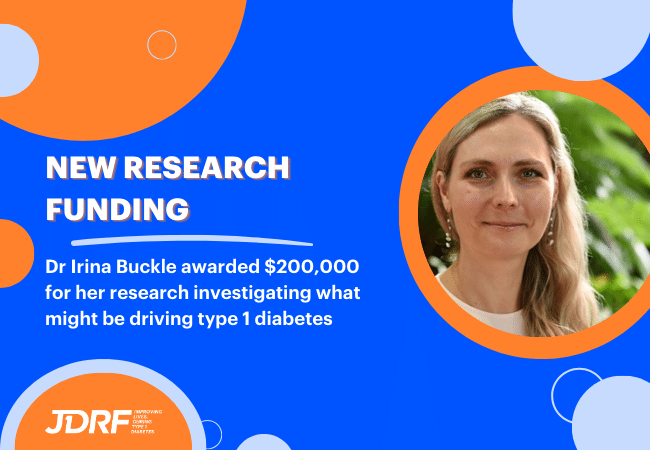T1D Research Roundup: February 2020
Every month, we round up the most exciting T1D research stories from around the world – the new advances in treatment, devices and knowledge that are making the biggest impact in the fight to cure, treat and prevent T1D.
Here’s what you need to know in T1D research this month:
Australia’s first population screening study for T1D launched
Earlier this month, JDRF announced that Dr Kirstine Bell will lead Australia’s first population screening study for T1D. The pilot study will use a blood test to look for islet autoantibodies – chemical markers in the blood that increase a person’s risk of developing T1D. By catching T1D before symptoms developed, it’s hoped that fewer children will develop diabetic ketoacidosis (DKA). The study will be one of only three in the world, and the first in Australia, to screen for islet autoantibodies in people without a family history of T1D.
Successful results for a smart insulin patch
A research team at UCLA in California have developed a smart insulin-delivery patch, designed to both monitor glucose levels and deliver insulin. The patch is the size of a 20-cent piece, and has glucose-sensing microscopic needles embedded in its surface. If glucose levels rise, the sensors on the needles are triggered to release insulin. The patch is less painful to apply that a pin prick. After successful studies in animals, researchers are planning to test the patch in human trials as a next step.
New drug combination stimulates beta cell growth
A new combination of two drugs has been discovered that, when taken together, can stimulate the body to produce new beta cells at a rate never seen before. One of the medications, known as a GLP-1 receptor agonist, is widely used to treat type 2 diabetes. When combined with a drug known as harmine, the combination stimulates the body to produce new beta cells, without damaging other cells. Now that the researchers have discovered the effects of the drug combination, the next step is to trial the treatment in animal studies.
DNA folding linked to T1D development
Researchers in the US have discovered a new potential cause of T1D – how a person’s DNA is folded. Each cell in the body contains about 2m of DNA, tightly folded and packed into structures known as chromosomes. The researchers discovered that a particular change in a person’s DNA sequence affects how their DNA is folded, which in turn affects genes linked to T1D development. The study is an important step on the way to understanding the link between genetics and autoimmune conditions like T1D.
More targeted stem cells
At the Washington University School of Medicine in the US, researchers have successfully controlled blood sugar in mice with T1D, using human stem cells converted into insulin-producing beta cells. The study showed that blood sugar began to stabilise within two weeks, and some of the mice remain cured more than a year later. Previous stem cell studies in T1D have suffered from high levels of “off-target” cell types – cells other than beta cells that arise incidentally during the stem cell conversion. While off-target cells are not harmful, they mean that more stem cells are needed to produce enough beta cells. Researchers in this study used a more targeted, efficient approach that resulted in lower numbers of off-target cells.
Better diagnosis of rare forms of T1D
Researchers at the University of Geneva and the Lituanian University of Health Sciences have discovered 11 new genes that cause rare forms of monogenic diabetes. Monogenic diabetes is caused by changes in a single gene, and is different from type 1 diabetes – thought to be caused by a combination of factors, involving multiple genes. Many people with monogenic forms of diabetes, including MODY, are initially misdiagnosed as having type 1 or type 2 diabetes, even though their treatment needs may be quite different. It’s hoped that the new discovery will help refine the process of diagnosis and lead to fewer people being misdiagnosed.
Interested in hearing more about research & clinical trials? Sign up to be a JDRF Game Changer and receive regular updates on the latest T1D research.




